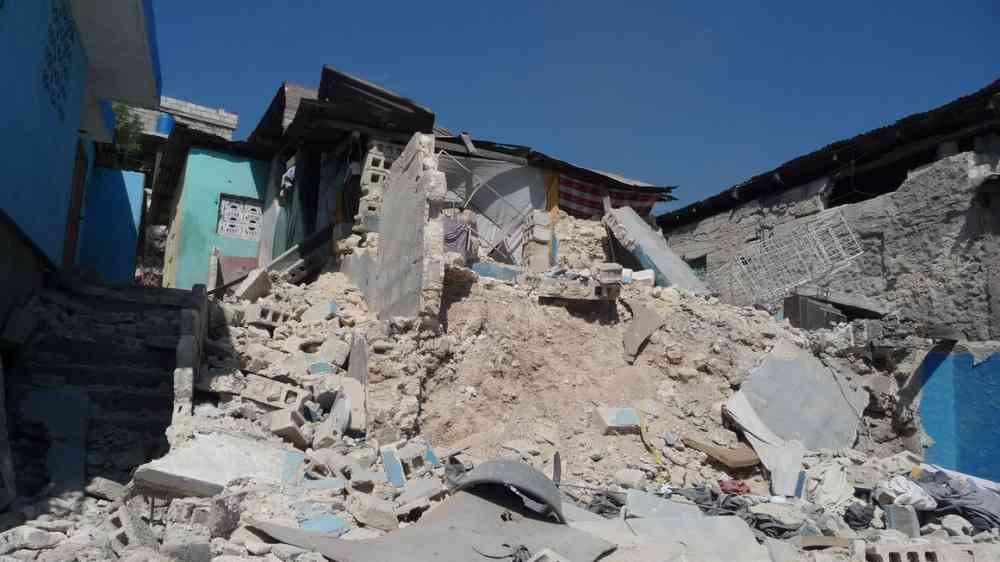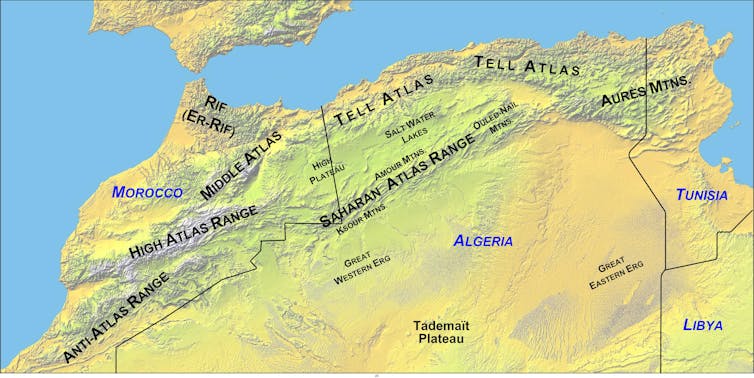Morocco’s earthquake wasn’t unexpected – building codes must plan for them

More than 2,000 people died when a powerful magnitude 6.8 earthquake struck Morocco on 8 September. The epicentre was in the High Atlas Mountains, 71km (44 miles) south-west of Marrakesh. Moina Spooner, from The Conversation Africa, asked José A. Peláez, a professor in geophysics who has carried out research on seismic activity in Morocco, about what led to this situation.
What geological factors contributed to this earthquake?
The Earth’s surface is constituted of several tectonic plates, large segments of the planet’s outer layer, which move against each other. This movement is responsible for various geological phenomena, such as earthquakes, volcanoes, and the formation of mountains and ocean basins.
The tectonic activity in Morocco primarily involves the convergence of the Eurasian and the Nubian (African) plates. The Eurasian Plate pushing against the Nubian Plate is what led to the formation of the Atlas Mountains, which run through Morocco, Algeria and Tunisia. The mountains are where the epicentre of this recent earthquake was.
Currently, the collisions between the plates are causing a shortening of the Atlas Mountains, explaining the area’s seismicity. We know this because of data from GPS measurements, which show that they are moving about 1 millimetre closer to each other every year.
This shortening and compression is causing what are known as faults, huge friction between plates. These faults are the likely cause of this earthquake. Scientists think that these faults have been active for a long time, going back a few million years.
In addition, as pointed out by various researchers, the High Atlas Mountains have a unique geological feature where the Earth’s outermost and hard layer, called the lithosphere, is thinner than usual, combined with an unusual rise of the mantle. All these features could have influenced the occurrence of this high magnitude earthquake.
What is Morocco’s history of earthquakes?
Seismic activity and its phenomena, like earthquakes, are not unusual in Morocco.
Over the last thousand years, earthquakes affecting Morocco have tended to take place mainly in two areas. Offshore, along the Azores-Gibraltar transform fault and the Alboran Sea, and another one onshore, along the Rif mountains in northern Morocco and the Tell Atlas mountain range in north-western Algeria. Earthquakes along the Atlas Belt are smaller in number, but not unusual.

The most significant, recent earthquakes affecting Morocco were in 1994, 2004 and 2016, with magnitudes ranging between 6.0 and 6.3. These occurred in the most seismically active region in Morocco and also in the western Mediterranean region.
A bit further back in history, there was the devastating Agadir earthquake in February 1960, with a magnitude of 6.3. It was located around the boundary between the western High Atlas and the Anti Atlas, to the south. Available data indicates that between 12,000 and 15,000 people died due to this event. In addition, near the location of the recent event, there was another earthquake in 1955, with an estimated magnitude of about 5.8.
Even further back, prior to the establishment of seismometers, several significant events were recorded in Morocco. Among them were the 1624 Fès earthquake, with an estimated magnitude of 6.7, and the 1731 Agadir earthquake, with a magnitude of 6.4.
Could it have been predicted?
Earthquakes cannot be predicted, even with the current knowledge in seismology. In fact, many researchers think that it will not be possible to do so in the future either. What seismologists can do is establish the areas in which earthquakes are most likely to occur, even establish the probability of their occurrence and its uncertainty.
This is that we call a long-term prediction, carried out from specific seismic hazard studies in the region. They are based on knowledge of past seismicity in the area, both historical and instrumental, and on the existence and knowledge of active tectonic structures (faults) that could generate earthquakes. The greater the knowledge that one has on these two topics – seismicity and active faults in the region – the more knowledge one will have about the future seismicity that may occur in the area, and the less the uncertainty will be.
Seismic hazard studies also include the study of near-surface soil conditions and the characteristics of buildings. This helps to assess the possible damage from these potential earthquakes.
What can be done to lessen the impact of future earthquakes in Morocco?
The best tool we have to mitigate the impact of earthquakes is to conduct reliable seismic hazard studies. The results of these must then be implemented into national building codes. This way engineers can incorporate seismic safety into building designs.
Building codes need to take into account several factors, including the characteristics of the soil, the way seismic waves move and how the soil can amplify its movement during an earthquake. Also the expected shaking of the ground, which influences the behaviour and damage of buildings. These factors vary from one city to another, and in some cases from one district to another.
Seismologists know that earthquakes do not kill people – buildings do. Buildings with lack of regulation and lack of structural support are potential killers in high seismic hazard areas. Building codes must therefore be mandatory, and should be updated periodically. As more is learned about earthquake geology and the impact of earthquakes on buildings, building codes should be updated regularly. This is the best way to protect ourselves against these catastrophic phenomena. Territorial planners and rulers must know this and take it into account.
![]()